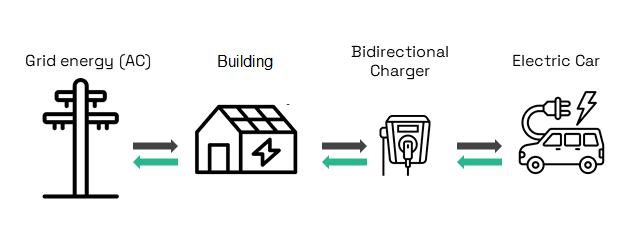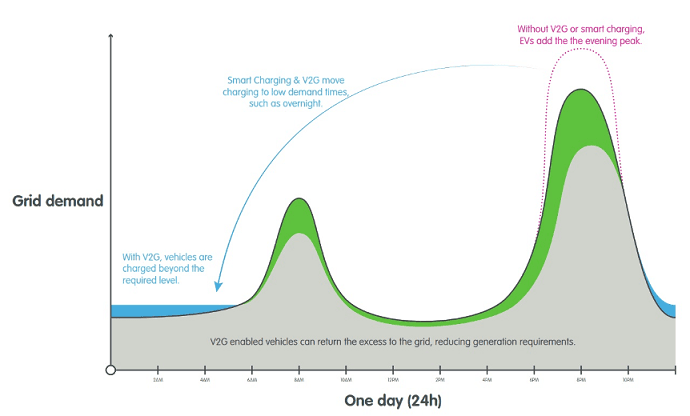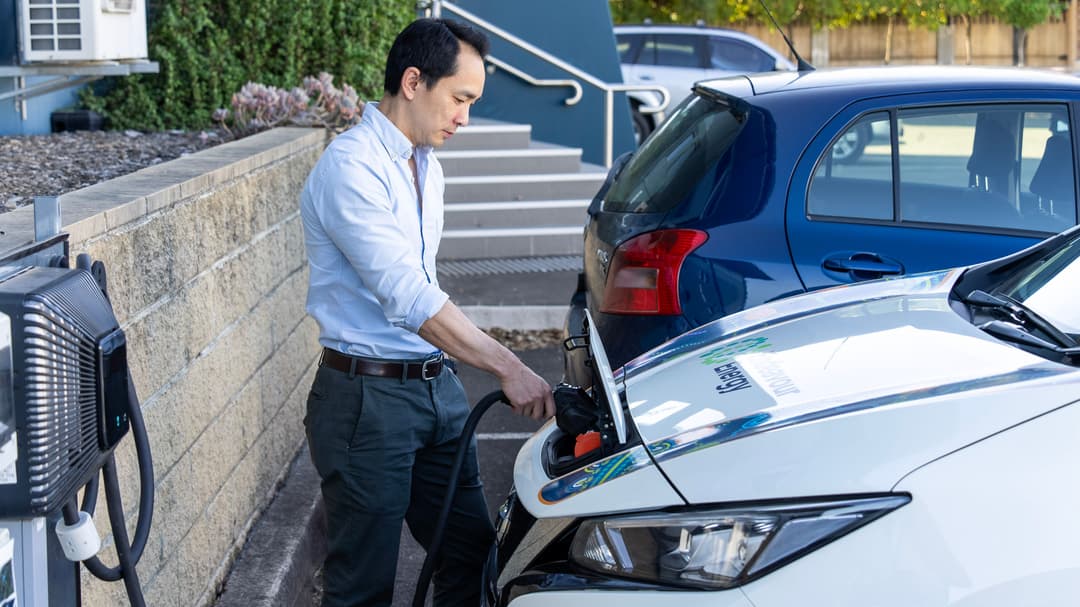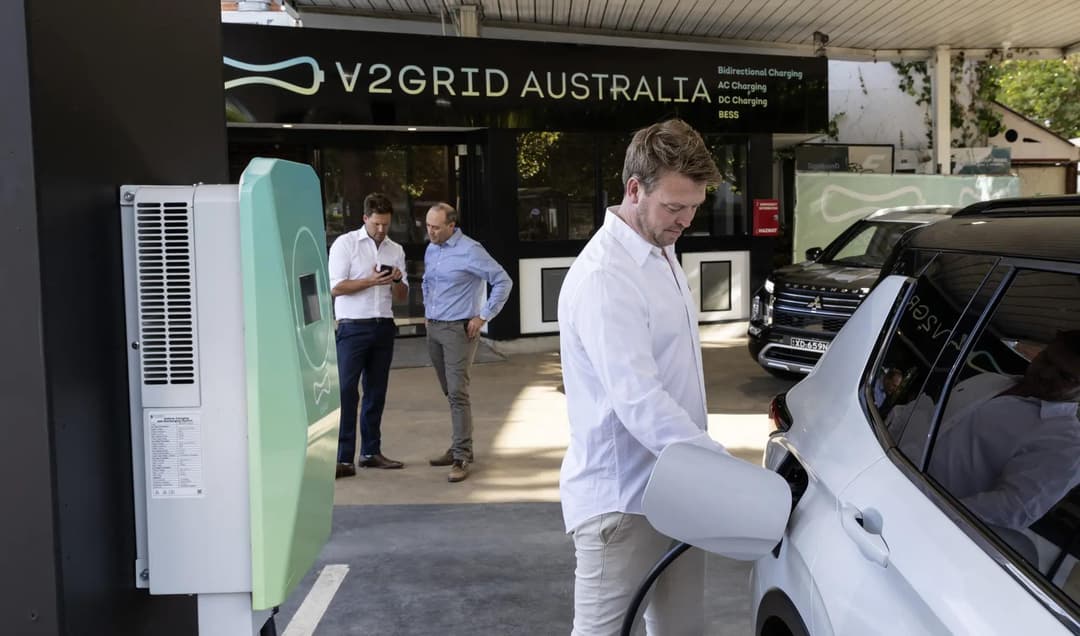If you’re driving an EV, chances are you’ve already thought of your car as more than just a way to get around. But what if your EV could also act like a mobile battery pack for your home—or even the entire energy grid?
That’s the idea behind Vehicle-to-Grid (V2G) technology. It allows EVs to discharge stored electricity back into the grid during peak demand. In theory, this helps stabilise energy supply while offering drivers potential earnings. Think of it as turning your EV into an energy trader—charging when power is cheap and feeding it back when prices spike.
▶️MORE: Bidirectional (V2H and V2G) EV Chargers Guide (2025)
For Australian EV owners, the concept is gaining attention. With solar uptake on the rise, energy prices fluctuating, and smart home tech becoming more common, V2G could soon become part of everyday EV ownership.

From theory to reality: How it’s working in Shanghai
A recent survey by The Paper Institute (conducted 26–28 May 2025) explored a major V2G pilot project in Shanghai involving EV makers like Nio and Avatr, battery suppliers, and everyday car owners. The goal: test real-world charging infrastructure and understand what’s holding V2G back. We breakdown the findings below.
Yes, you can make money from V2G
Let’s start with the big question: is V2G profitable?
In short, yes, with the right vonditiond. In Shanghai, EV owners are already earning from it by taking advantage of peak-valley electricity pricing. That’s when energy prices drop overnight (off-peak) and climb during the day (peak hours). Charge low, sell high.
▶️MORE: Tesla Model 3 Bidirectional Charging (V2G and V2H)
Take Xia Yu, a 36-year-old automotive engineer and Nio owner. He charges his car at home overnight and discharges it at his workplace V2G station during expensive peak periods. Over time, he’s earned around ¥500 (AU$70) per month—thanks to a total discharge of 15,610kWh since late 2022.

Then there’s Wang Wenjun, a 32-year-old Avatr driver. He became Shanghai’s first private owner to install a bi-directional meter through the State Grid. Even though he’s just getting started, Wang expects V2G income to offset his running costs over time.
These figures may seem low relative to whats possible in Australia, that is due to two main reasons:
- Electricity is much cheaper in China, with my households receiving subsidised electricity tariffs,
- The differerence between peak and off-peak tariffs is also quite low - meaning the opportunity to 'buy low' and 'sell high' is lower.
▶️MORE: Which Electric Cars Have Bidirectional Charging (V2L, V2G, V2H)?
Battery worries: The elephant in the garage
Here’s the catch: a lot of EV owners are hesitant about V2G because of concerns about battery degradation. After all, nobody wants to shorten their battery’s life in exchange for a few bucks.
Xia Yu says many of his peers are wary of excessive charging and discharging cycles. And for Aussies who plan to keep their EVs long-term, that concern is valid.
But the story isn’t all doom and gloom. Here’s how the Shanghai project is addressing it:
- Battery-as-a-Service (BaaS): Nio offers battery swaps where drivers lease batteries covered by lifetime warranties. This removes personal risk and makes V2G more appealing. Nio now has three bi-directional battery swap stations in Shanghai.
- Battery chemistry matters: According to battery manufacturers, ternary lithium batteries last 1,100–1,500 full cycles, while lithium iron phosphate (LFP) options can exceed 3,500. Used smartly, most EV batteries can handle moderate V2G activity across the life of a vehicle.
- Changing ownership cycles: Many EV drivers (in China and increasingly in Australia) now upgrade every 3–4 years, similar to phone upgrades. That means battery longevity matters less if the car isn’t kept for a decade.
For context, Xia Yu’s usage of 15,610kWh translates to around 300 full battery cycles over five or six years - well within the lifespan of modern batteries.
▶️MORE: What is Bidirectional Charging, V2G, V2H, V2L?

Making V2G work: What needs to change?
While tech is improving, the biggest barrier to V2G isn’t hardware, it’s public understanding and incentives. The Paper Institute’s survey found that drivers with a technical or solar background were far more open to trying V2G.
For example, Wang Wenjun is a home designer familiar with solar systems, and he’s even used his EV to power his rural home. Xia Yu previously worked with solar in the US. But for the average driver? Education is key.
▶️MORE: When is V2G Really Coming to Australia?
What Australia can learn
Australia’s energy landscape is ideal for V2G. We’ve got high rooftop solar penetration, time-of-use tariffs, and a growing number of EVs on the road. But unlike Shanghai, most Aussies don’t yet have access to bi-directional chargers, battery swapping, or strong V2G incentives.
Still, the lessons are clear:
- Support infrastructure rollouts—particularly smart, bi-directional home chargers.
- Educate owners about the true impact on battery health (which is often less severe than feared).
- Create incentives that reward grid support, especially during energy peaks.
EV Charging Calculator: Let Zecar help you find an estimate cost of maintaining an EV

Looking ahead: From cars to power assets
Xiang Chen, Nio’s Head of V2G, believes V2G will eventually unlock a whole new layer of value in EV ownership. “Every charge and discharge will contribute to the distribution of energy value,” he said. “At that point, electric vehicles will likely become a financial product.”
Xiang Chen, Nio’s Head of V2G, believes V2G will eventually unlock a whole new layer of value in EV ownership. “Every charge and discharge will contribute to the distribution of energy value,” he said. “At that point, electric vehicles will likely become a financial product.”
Stay up to date with the latest EV news
- Get the latest news and update
- New EV model releases
- Get money savings-deal

Privacy policy

